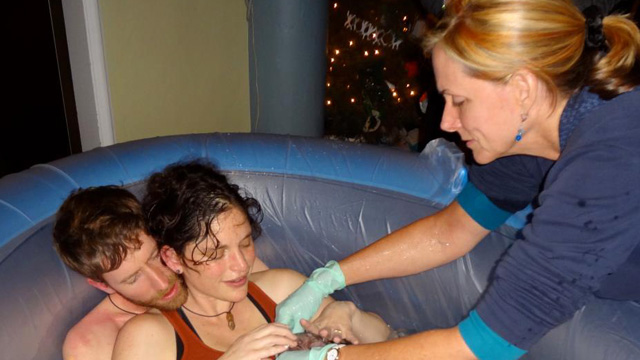“Malpractice insurance policies won’t cover a physician that has anything to do with out-of-hospital births,” Rock says.
The California Medical Board realized it was impossible for midwives to comply with the law. So last year they suggested changing it. Doctors took the lead in drafting a bill. They didn't want to take the blame if a woman got transferred to the hospital under a midwife’s care and something went wrong.
“If a physician is 1 percent responsible, but a midwife has no liability insurance, the physician can be on the hook for all the economic damage,” said, Shannon Smith-Crowley, a lobbyist for the California chapter of the Association of Obstetricians and Gynecologists.
Doctors got no break on the liability issue in the final version of the law. Trial lawyers involved in the drafting process wanted to protect their right to sue well-funded hospitals and vowed to block any law that restricted that.
But midwives emerged with a list of new freedoms that went effect Jan. 1. Rock says the biggest change was doing away with doctor supervision. As a result midwives can now accept Medi-Cal coverage, giving low-income women the option of having a home birth.
“Now we’re in a situation where we can create more equity, where any woman who chooses it can have that kind of care,” she says.
The law also authorizes midwives to order ultrasounds, drugs and lab tests for their clients. Before the law, Rock’s requests were often turned down. That left one of her clients jumping through hoops to get a genetic screening test.
“That mom had to find a physician willing to see her, wait to get in to see the physician to order the test, and then it was too late,” she says. “You missed the window where that particular test would be accurate.”
Midwives had to make compromises in the bill, too. They are no longer allowed to care for women pregnant with twins or breech babies. And they are required to send women to a physician if they show signs of abnormalities during their pregnancies.
Doctors also urged women to visit a doctor regularly at the same time they’re seeing a midwife, a move many midwives do not favor, but which Smith-Crowley says can help ease relationships between a woman and doctor should she need to be transferred to a hospital during labor.
“They’ll be better integrated with the medical system so they can get care when they need,” she says.
About 18 percent of women who plan births at home or a birth center in California end up transferring to a hospital, according to a 2011 state summary. Most of those are not emergencies. Only about 8 percent of them ended in a C-section. But midwives are quick to point out that 33 percent of women who plan to have a vaginal birth at a hospital end up getting a C-section.
That was one stat that made Brooke Vezino want a home birth. She’s a doctor, and her obstetrics training in medical school made her vow to stay out of the hospital when she had her own babies.
“The medical students and nurses and doctors put on these full bodysuits and hoods and gowns -- you look like space creatures,” she says. “Literally nobody is looking at the mom, talking to the mom, making eye contact with the mom. Everyone is focused on the vagina.”
She didn’t want that.
“The contrast of that to being in a warm tub of water with my husband behind me, my mom and child standing above me, my midwife and best friend standing in front of me holding my hands, speaking to me lovingly as I’m going through that process,” she says. “It was so different.”
